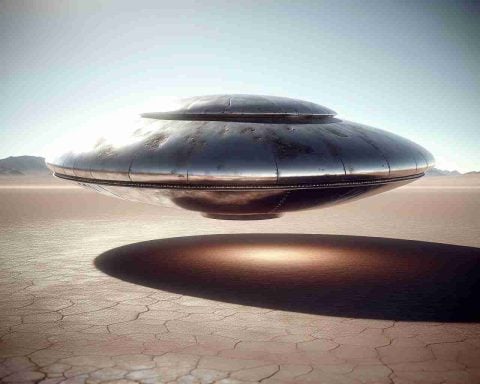- Boeing’s Starliner program has incurred over $2 billion in losses due to various technical issues and delays.
- NASA has had to rely more heavily on SpaceX, assigning them to return astronauts from the ISS due to Starliner’s setbacks.
- SpaceX’s Crew-9 mission had planned accommodations for the affected astronauts, demonstrating proactive planning on NASA’s part.
- Elon Musk and Donald Trump contributed to public narratives about the situation, suggesting potential shifts in NASA’s future partnerships.
- The possible nomination of Jared Isaacman, a SpaceX advocate, for a leadership position at NASA signals a potential strategic pivot towards SpaceX.
- Amidst these challenges, Boeing faces an uncertain future in the space industry.
In a tumultuous chapter of space exploration, Boeing’s Starliner program has become a financial quagmire, burning through over $2 billion due to relentless mishaps. Initially pegged as NASA’s twin to SpaceX’s Crew Dragon, the Starliner was meant to shuttle astronauts to the International Space Station (ISS). But gremlins in the machine, from thruster failures to helium leaks, have turned Boeing’s dreams into a waking nightmare.
The most recent blow? A staggering $523 million charge in 2024 alone. NASA, facing pressure, had to pivot, entrusting SpaceX with the safe return of astronauts Butch Wilmore and Suni Williams, who were left in the lurch by the embattled Starliner.
The drama didn’t end there. Elon Musk leaned into the narrative, claiming SpaceX would rescue the “stranded” astronauts after an outcry from Donald Trump. Yet, NASA calmly assured observers: Wilmore and Williams were never stranded. Two empty seats had been earmarked for them aboard the SpaceX Crew-9 mission, a testament to proactive planning rather than desperation.
Trump’s declarations and Musk’s intervention stirred the pot further, possibly heralding a shift in NASA’s alliances. There’s talk of a major tilt towards SpaceX, especially with the nomination of Jared Isaacman, a SpaceX champion, for a leadership role at NASA.
As Boeing grapples with aerospace challenges and the specter of Starliner abandonment looms, the company faces a cloudy horizon in the space sector. Meanwhile, the astronauts continue their unscheduled extended stay on the ISS, busily contributing to its upkeep and operations. Their ride home? SpaceX, arriving in style, fulfilling a promise quietly kept amidst the chaos.
The Turbulent Journey of Boeing’s Starliner: What Lies Ahead?
Overview of the Boeing Starliner Program
The Boeing Starliner program was ambitious, designed to serve as NASA’s counterpart to the successful SpaceX Crew Dragon. However, it has faced a series of challenges, including thruster issues and helium leaks, pushing its costs over $2 billion. A significant hit came with a $523 million charge in 2024, highlighting persistent financial strains.
Understanding the Setbacks
Thruster Failures and Leaks:
The engineering issues, such as thruster malfunctions and helium leaks, have been at the core of Starliner’s troubles, causing flight delays and grounding operations. These technical glitches have proven costly and have raised safety concerns that Boeing has been attempting to rectify.
Financial Implications:
The financial burden continues to mount for Boeing, with over $2 billion spent and more expenses likely. This has fueled speculation about the viability and future of the Starliner project.
NASA’s Shift to SpaceX
Recent events, including reliance on SpaceX to bring astronauts Butch Wilmore and Suni Williams back to Earth, indicate a potential shift in NASA’s partnerships. Elon Musk’s engagement in the narrative and the nomination of SpaceX enthusiast Jared Isaacman to a potential leadership role at NASA suggest a strengthening bond between NASA and SpaceX.
NASA’s Assurance:
Despite the chaos, NASA has maintained its narrative that there was never a risk of stranding astronauts, as contingency plans with SpaceX were pre-emptively in place.
Pros and Cons of the Current Space Programs
Pros of SpaceX’s Involvement:
– Proven Track Record: SpaceX has thus far demonstrated reliability and innovation in its missions.
– Financial Efficiency: SpaceX offers competitive pricing for its services compared to traditional aerospace companies.
– Technological Advances: Innovations such as the Falcon rockets and Crew Dragon capsules indicate technical leadership.
Cons of Starliner’s Challenges:
– Cost Overruns: The high costs associated with Starliner’s delays and mechanical issues are concerning for investors and partners.
– Trust Issues: Continued delays and technical failures may undermine trust within the aerospace community and among potential government partners.
Future Predictions and Market Trends
Near-Term Predictions:
– Boeing might need to adopt aggressive strategies, including potential partnerships or changes in leadership, to salvage the Starliner project.
– NASA’s strategic alliances are likely to lean more towards proven partners like SpaceX given recent successes and dependability.
Market Trends:
– There is an increasing privatization in space travel, with private companies like SpaceX leading the charge.
– The demand for reliable and cost-effective space travel solutions is on the rise, benefiting companies that can deliver.
– Sustainability and long-term economic impacts will drive investment decisions and partnerships in the space sector.
Links to Explore More
– For more on Boeing’s initiatives and challenges, visit Boeing.
– To discover SpaceX’s innovations and future missions, visit SpaceX.
– Explore NASA’s projects and its evolving partnerships at NASA.
Conclusion
As Boeing navigates its Starliner situation, the broader space industry is at a crossroads. The rise of companies like SpaceX underscores a shift towards private sector dominance in space exploration. The coming years may see Boeing recalibrate its strategies to remain competitive in this rapidly evolving field.




















